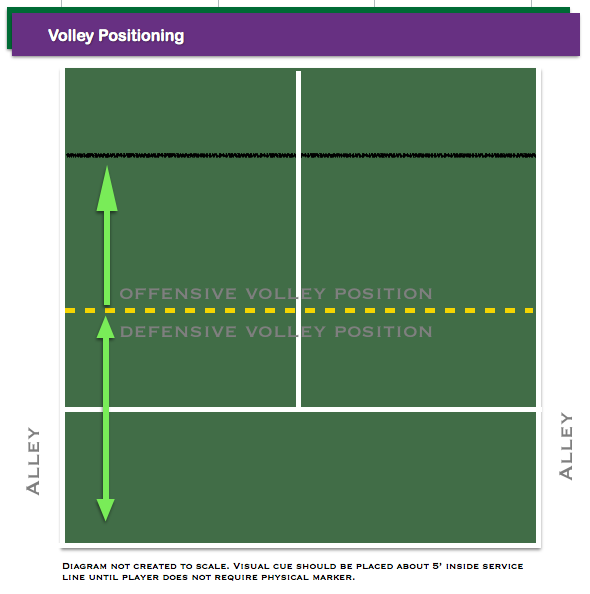Effective volleying is an important tool in any singles tennis player’s toolbox. Strategic volleying begins with an understanding of where you should be and why.
In order to visualize proper volley positioning, I advocate clearly defining the boundary between offensive volley position and defensive volley position with some type of visual marker. As you practice proper positioning, you’ll be able to imagine this boundary and remove the physical marker during your practice.
Place a rope, line markers or chalk a horizontal line about 5 feet inside and parallel to the service line.
1. Define Offensive and Defensive Volleying Position
The area between the net and your marker is offensive volleying position. Defensive volleying position is the area from the marker to the baseline.
2. Position Yourself Correctly on Offense
When you make a move toward the net, position yourself at least to the edge of offensive volleying position.
If you don’t get to the edge of offensive volleying position, you are vulnerable to a shot to your feet which would force you to hit up on the ball giving your opponent an advantage. So you want to avoid this scenario.
How close to the net you move depends on your opponent’s style. You should get as close to the net as your opponent will let you.
If your opponent tends to answer an approach shot with a lob, you’ll want to stay toward the edge of offensive volley position in order to defend properly. On the other hand, if your opponent is likely to drive the ball in return, you can move in a little. You should be able to assess an opponent’s style fairly quickly in a match.
*This post contains affiliate links. If you make a purchase, I receive a small commission at no additional cost to you. It helps support this site. Thanks.









Leave A Comment